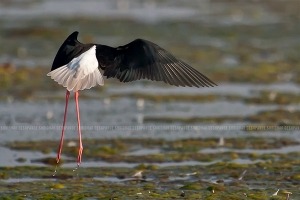Bhigwan – Paradise for Bird Photographers
There are some places that God created for just beauty and diversity. Bhigwan is one of such places.
Located just about 100 km from Pune, Bhigwan forms one of the largest water bodies of the country.
Spread over nearly 18,000 square hectors, these are the backwaters of Ujani dam.
Perennially waterlogged, it is the culmination of Mula-Mutha river. Recently, Bhigwan has been declared by the Ministry of Forest and Environment as
a bird sanctuary.
A paradise for number of migratory birds, Bhigwan stands out in the list of “must visit” places around Pune, especially during winter times.
Flocks of hundreds of Greater Flamingos, Common Cranes, Brown Headed Gulls, Painted Storks, Grey Herons make a breath-taking scenario.
An early morning travel and reaching Bhigwan by sunrise time is an ideal way to plan your one-day outing.
The diversity of bird species found at Bhigwan is incredible. In fact, Bhigwan is also called mini Bharatpur!
Large number of migratory activity birds come to Bhigwan for nesting. These birds include Greater Flamingos, variety of Ibises, Storks, egrets, seagulls.
Apart from these wader species, Bhigwan also as a large variety of local terrestrial birds.
All told, Bhigwan boasts of sighting of more than 400 different species of birds through the year.
Bird photography does not end at merely taking shots of either sitting or in-flight birds.
As a matter of fact, these lay the foundation to more interesting bird photography. A bird photographer needs a lot of patience. He also needs to have very good observation skills, and curiosity to understand the birds, of course, goes without saying !
Once you have gained enough confidence and sharpened your skills with your photography equipment, you can start moving towards getting stories out of your photographs.
This may not be possible every time, but you would start collecting a fair share of your stories.
The key to this is being able to sit and observe birds in their activities. There are several small yet interesting things happening in their world. Try relating to their world and you will soon be narrating bird stories through your photographs.
The stories can be a single photograph or with more patience and time at hand, (and of course, good amount of luck on your side!) a sequence of photographs.
























